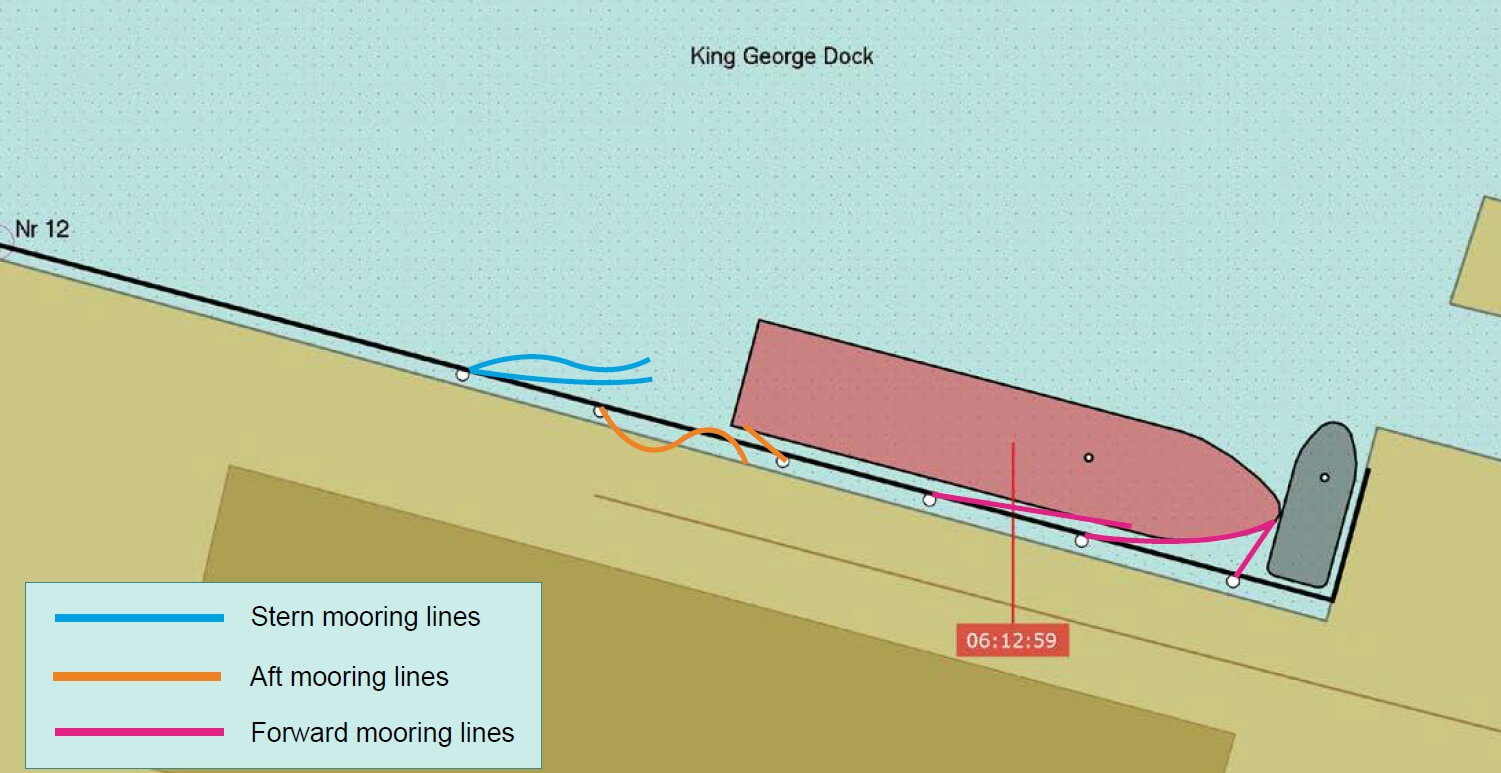Report: Control Transfer Error Sent a Trawler Into the Side of a Tug

The UK's Marine Accident Investigation Bureau (MAIB) has released its report into an allision between a trawler and a moored tug at the port of Hull in 2022. The accident was caused by a mismatch between the controllable pitch propeller's control levers when transferring control from the bridge to the engine room, according to the agency.
On June 24, 2022, the Kirkella returned from a fishing voyage and transited up the Humber to her usual berth at King George Dock in Hull. The master took the helm control at the starboard wing station for berthing. At about 0531, the master berthed the vessel alongside the pier in the southeastern corner of the terminal, without incident. The crew passed lines over to the dock, and the vessel was securely tied up by 0606, with two head lines, two stern lines and four spring lines. The crew began running out the gangway.
At 0611, with the voyage fully over, the master began the sequence for shutting down the ship's engines. He transferred helm control to the center console, and then transferred control to the engine room. The first engineer was on duty in the engine control room and pressed a touchscreen button to accept control of propulsion. The engine control room's pitch control lever was set at 85 percent, and the propeller shifted to match this (unintended and unwanted) "ahead" setting.
Seconds later, the Kirkella began to move ahead. The first officer was on the bridge and noticed almost immediately, and raised the alarm, just in time to watch the stern lines part. The master called the engine room to order an engine shutdown, and he hit the emergency stop button on the center console to declutch the engine.
The ship's momentum continued to carry her forward, parting two more mooring lines and dragging the gangway off the dock. Within 10 seconds, the bow of Kirkella hit the moored harbor tug Shovette amidships, below the waterline. The tug began spilling diesel into the harbor and taking on water, but the swift response of another local tug prevented it from capsizing and sinking.
 Illustration courtesy MAIB
Illustration courtesy MAIB
The MAIB's investigation homed in on the vessel's propulsion control system, a sophisticated Rolls-Royce Helicon-X3 installed during outfitting in Norway in 2018. The Helicon-X3 is an advanced design typically used for complex DP vessels that require digital control of multiple thrusters.
SOLAS rules and IACS universal rules require an interlock to prevent sudden propulsion control changes when transferring control between consoles. According to the system's operating manual, it did not have an interlock to prevent control switching between the bridge and engine room consoles when the propulsion pitch control lever positions differed between the sending end and the receiving end. The Rolls-Royce design was approved by class in 2016, and the vessel's specific unit passed factory acceptance testing.
The bridge officers were used to the lack of an interlock, and they always set the controls to "stop" before switching consoles in order to prevent an abrupt change; this was an informal practice and was not documented in procedures. On the day of the casualty, the first engineer was busy with administrative work and accepted the transfer of control from the bridge to his station without noticing that the pitch control setting on his console was at 85 percent - a predictable human error, made more likely by a long 12-hour shift and by a lack of formal procedure, according to MAIB.
"As fitted to Kirkella, the Rolls-Royce Helicon-X3 propulsion control system did not align to the standard of [IACS] UR M43.12, which required a means to prevent significant alteration of the propelling thrust when transferring control," MAIB concluded. "The Rolls-Royce Helicon-X3 propulsion control system had been fitted to other vessels with remote control stations in the engine control room. Those systems might also not align with the requirement of UR M43.12."
The MAIB has issued a notice to industry operators about this potential issue, and the shipowner has asked the OEM to change Kirkella's propulsion controls to retrofit an interlock.
